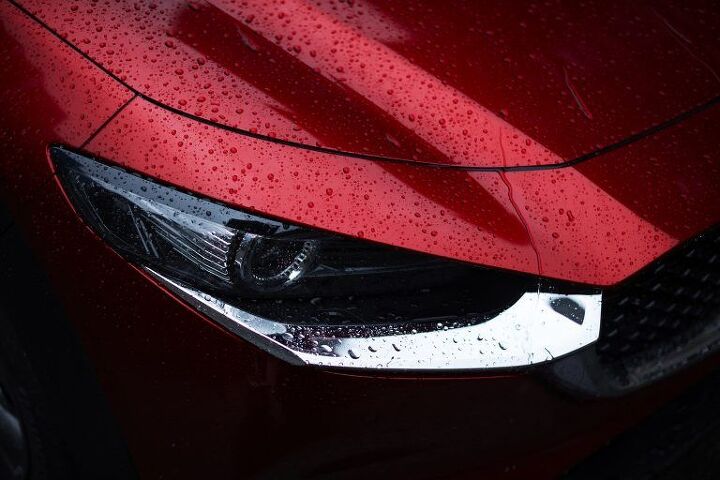Virus Puts the Brakes on New Mazda Plant, CUV

A joint Toyota-Mazda assembly plant in Huntsville, Alabama could see its opening delayed, all thanks to the economic turmoil and construction delays borne of the coronavirus pandemic.
Akira Koga, Mazda’s senior managing executive officer, said in an earnings briefing Thursday that construction on the $1.6 billion joint facility, first announced in early 2018, is being hampered by virus fallout. That throws into doubt the timing of two new crossover vehicles — one of which is crucial to Mazda’s future.
The plant is expected to house two crossover vehicles when it opens in 2021, with an annual capacity of 300,000 vehicles. Initially, Toyota planned to move the Corolla there, but changed its mind in favor of a new crossover vehicle in 2019. Mazda intends to build some sort of crossover geared for the American consumer; given the appearance of the tweener CX-30 late last year, it’s a no-brainer that Mazda has a midsize in mind. Perhaps a return of the CX-7?
An American-sized CUV with good margins and stable demand is exactly what the automaker, which found itself struggling in 2019 amid a decline in passenger car sales, needs going forward.
According to Bloomberg, Koga couldn’t say how long the delay might be. Currently, Mazda is tapping Japanese lenders for $2.8 billion in loans to cover itself through the ongoing turmoil.
In January, Mazda Toyota Manufacturing USA kicked off its first hiring phase for production team members, with later phases lasting into 2022. Three months later, under very different circumstances, Mazda issued a statement to AL.com that read, “On April 9, we informed state and local government officials in Alabama, along with our key suppliers how the COVID-19 pandemic is impacting our ability to maintain critical equipment delivery schedules, creating labor shortages, and slowing construction.
“As a result, we will delay the start of production of the Mazda Toyota Manufacturing plant to a time period later in 2021. We are eager to keep the project moving forward and appreciate the ongoing support of all key stakeholders.”
More than a month later, it seems Mazda is just as unsure of its future.
[Image: Mazda]

More by Steph Willems
Latest Car Reviews
Read moreLatest Product Reviews
Read moreRecent Comments
- 1995 SC I wish they'd give us a non turbo version of this motor in a more basic package. Inline Sixes in trucks = Good. Turbos that give me gobs of power that I don't need, extra complexity and swill fuel = Bad.What I need is an LV1 (4.3 LT based V6) in a Colorado.
- 1995 SC I wish them the best. Based on the cluster that is Ford Motor Company at the moment and past efforts by others at this I am not optimistic. I wish they would focus on straigtening out the Myriad of issues with their core products first.
- El Kevarino There are already cheap EV's available. They're called "used cars". You can get a lightly used Kia Niro EV, which is a perfectly functional hatchback with lots of features, 230mi of range, and real buttons for around $20k. It won't solve the charging infrastructure problem, but if you can charge at home or work it can get you from A to B with a very low cost per mile.
- Kjhkjlhkjhkljh kljhjkhjklhkjh haaaaaaaaaaahahahahahahahaha
- Kjhkjlhkjhkljh kljhjkhjklhkjh *Why would anyone buy this* when the 2025 RamCharger is right around the corner, *faster* with vastly *better mpg* and stupid amounts of torque using a proven engine layout and motivation drive in use since 1920.


































Comments
Join the conversation
From my understanding this upcoming US built SUV will be based on the Mazda 3/CX-30 platform, sized similar to the current CX-5 but more "rugged" and off-road oriented (think Bronco Sport). The actual CX-5 replacement will use the new RWD platform shared with the upcoming Mazda 6 and likely will be a little larger. My guess will be that the new US built car will be a CX-40 or a CX-50, and the CX-5 replacement a CX-60 (to better align with its platform mate).